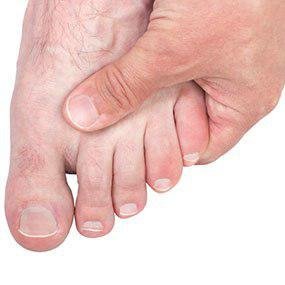Foot Arthritis
The Problem
 Arthritis is very common but is not well understood. Actually, “arthritis” is not a single disease; it is an informal way of referring to joint pain or joint disease. There are more than 100 different types of arthritis and related conditions. People of all ages, sexes and races can and do have arthritis.
Arthritis is very common but is not well understood. Actually, “arthritis” is not a single disease; it is an informal way of referring to joint pain or joint disease. There are more than 100 different types of arthritis and related conditions. People of all ages, sexes and races can and do have arthritis.
Treatment
The most common forms are osteoarthritis (degenerative joint disease) and rheumatoid arthritis. Osteoarthritis usually occurs with age and affects the fingers, knees, and hips. Rheumatoid arthritis is an autoimmune disorder that often affects the hands and feet. Other types include:
- Gout
- Lupus
- Fibromyalgia
- septic arthritis
There’s no single cure for most rheumatic diseases, though many conditions can be effectively controlled. At Dr. foot clinic has led to great improvements in this area.
The goals of treatment are to:
- Prevent loss of use of the joints
- Restore abilities that may have been lost
- Help you adapt to new activity levels
- Maintain your fitness
- Maintain your ability to take part in the activities you choose with minimal help from others
 Treatment options vary depending on the type of arthritis and include:
Treatment options vary depending on the type of arthritis and include:
- physical therapy
- helps to improve your general fitness and muscle strength, through specific exercises tailored to your condition and individual needs. It can be combined with pain-relieving treatments such as ice or heat packs and massage.
- occupational therapy
- practical advice on managing everyday tasks, choosing specialised aids and equipment, protecting your joints from further damage and managing fatigue.
- hydrotherapy
- exercises in a warm-water pool. The water supports your weight and therefore puts less pressure on your muscles and joints.
- orthopedic bracing
- Deformities resulting from RA or OA can limit a patient’s functioning. A careful decision should be made regarding the goal of orthotic prescription (e.g., prevention of foot-drop, relief of joint contractures). Joint preservation techniques are vital for prolonging patient independence. Orthotic devices can make activities of daily living much easier, leading to a greater degree of independence.
- Medications
- Medications can help reduce inflammation in the joint which decreases pain. Moreover, by decreasing inflammation, the joint damage may be slowed. There are many types of pain medications. Some pain medications are actually combinations of drugs that work together to relieve pain. Some pain medications are available over-the-counter (without a prescription), such as aspirin, acetaminophen, ibuprofen, and naproxen, or with a prescription, such as the narcotics oxycodone, propoxyphene, and codeine. Narcotic pain relievers can be habit-forming.
- This class of drug, which includes prednisone and cortisone, reduces inflammation and suppresses the immune system. Corticosteroids can be taken orally or be injected directly into the painful joint.
- Disease-modifying antirheumatic drugs (DMARDs).Often used to treat rheumatoid arthritis, DMARDs slow or stop your immune system from attacking your joints. Examples include methotrexate (Trexall) and hydroxychloroquine (Plaquenil).
- Nonsteroidal anti-inflammatory drugs (NSAIDs).NSAIDs reduce both pain and inflammation. Over-the-counter NSAIDs include ibuprofen (Advil, Motrin IB, others) and naproxen sodium (Aleve). Some types of NSAIDs are available only by prescription. Oral NSAIDs can cause stomach irritation, and some may increase your risk of heart attack or stroke. Some NSAIDs are also available as creams or gels, which can be rubbed on joints.
- Joint surgery
- If conservative measures don’t help, your doctor may suggest surgery, such as:
- Joint repair.In some instances, joint surfaces can be smoothed or realigned to reduce pain and improve function. These types of procedures can often be performed arthroscopically — through small incisions over the joint.
- Joint replacement.This procedure removes your damaged joint and replaces it with an artificial one. Joints most commonly replaced are hips and knees.
- Joint fusion. This procedure is more often used for smaller joints, such as those in the wrist, ankle and fingers. It removes the ends of the two bones in the joint and then locks those ends together until they heal into one rigid unit.


